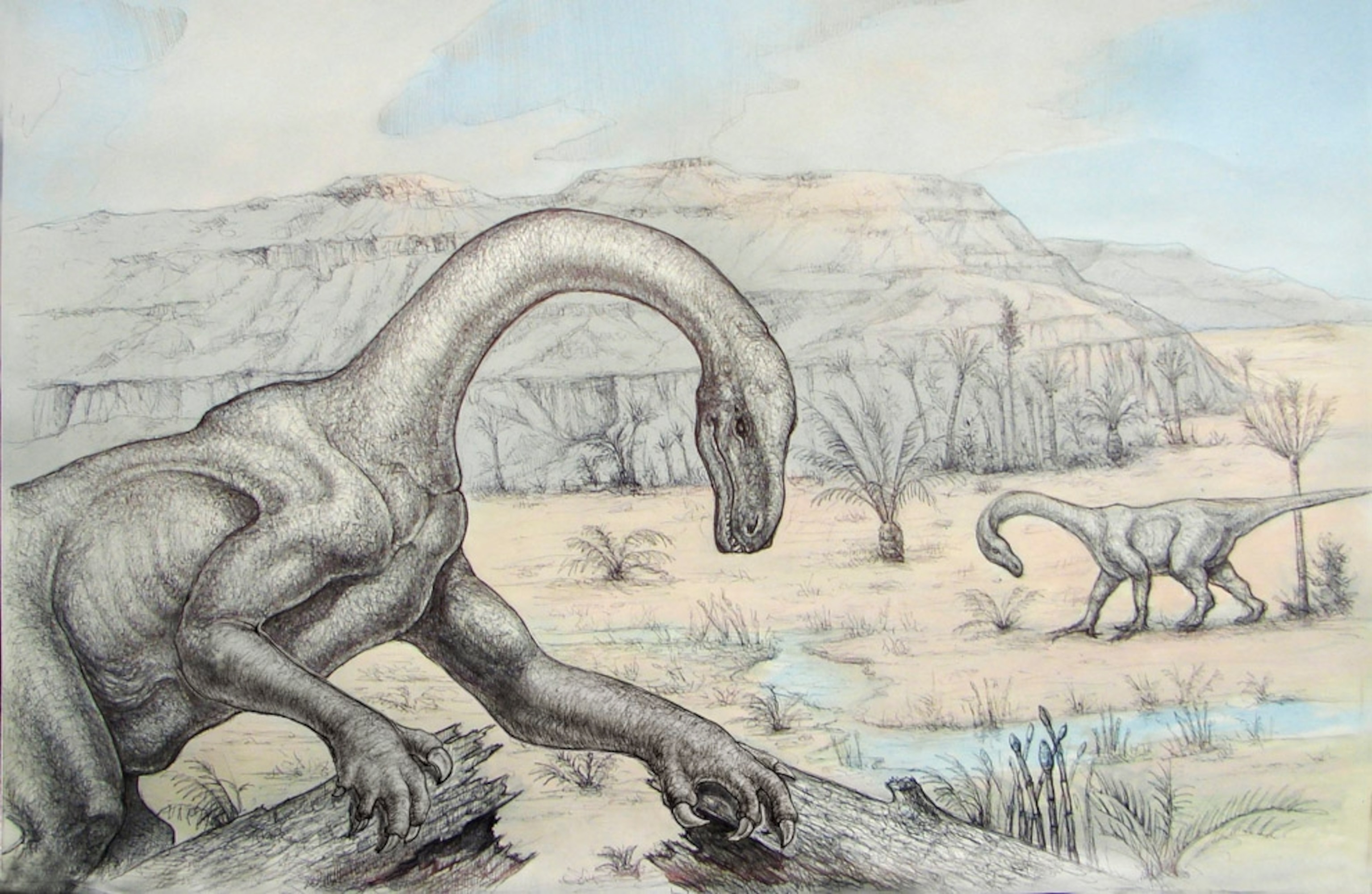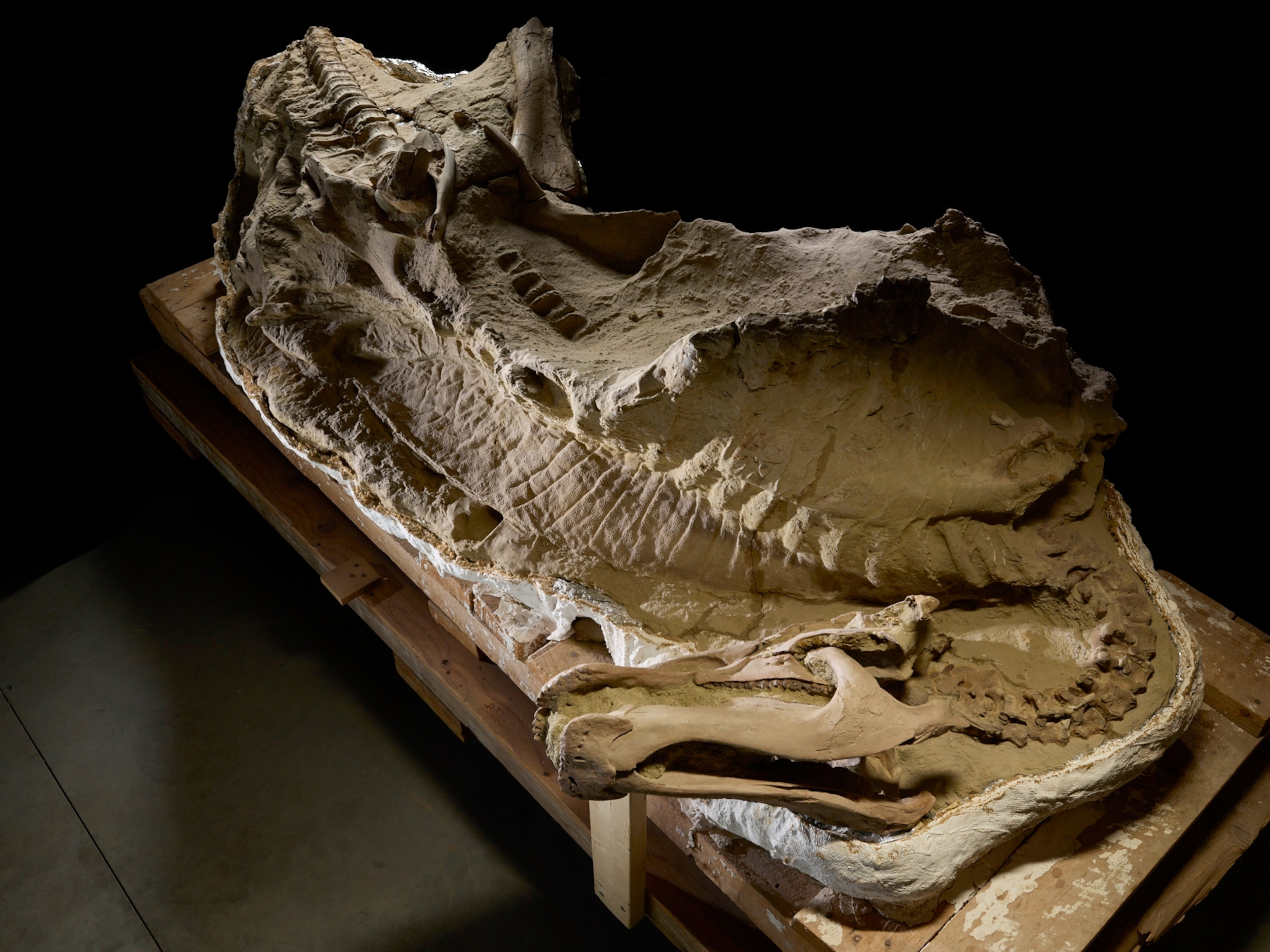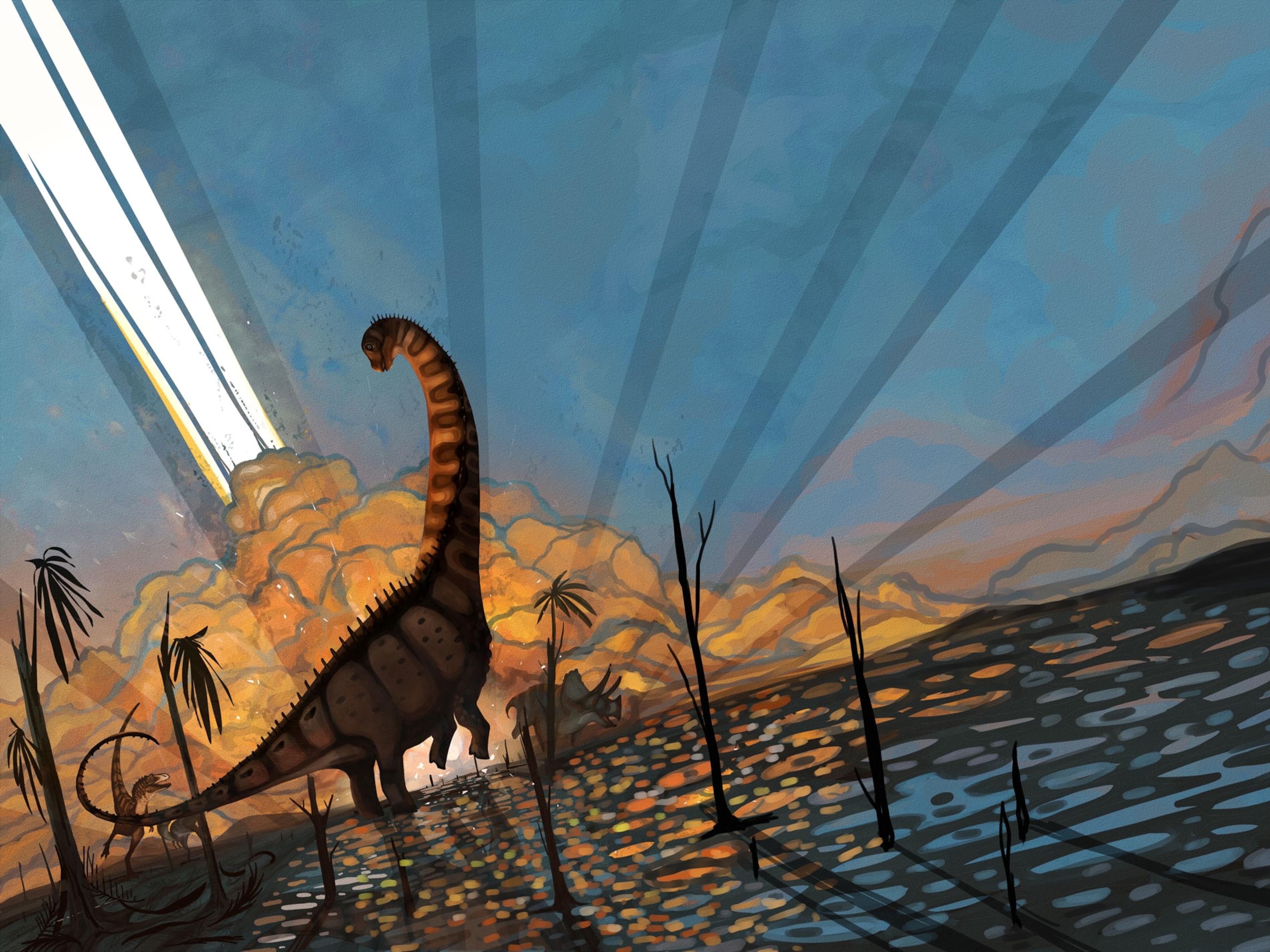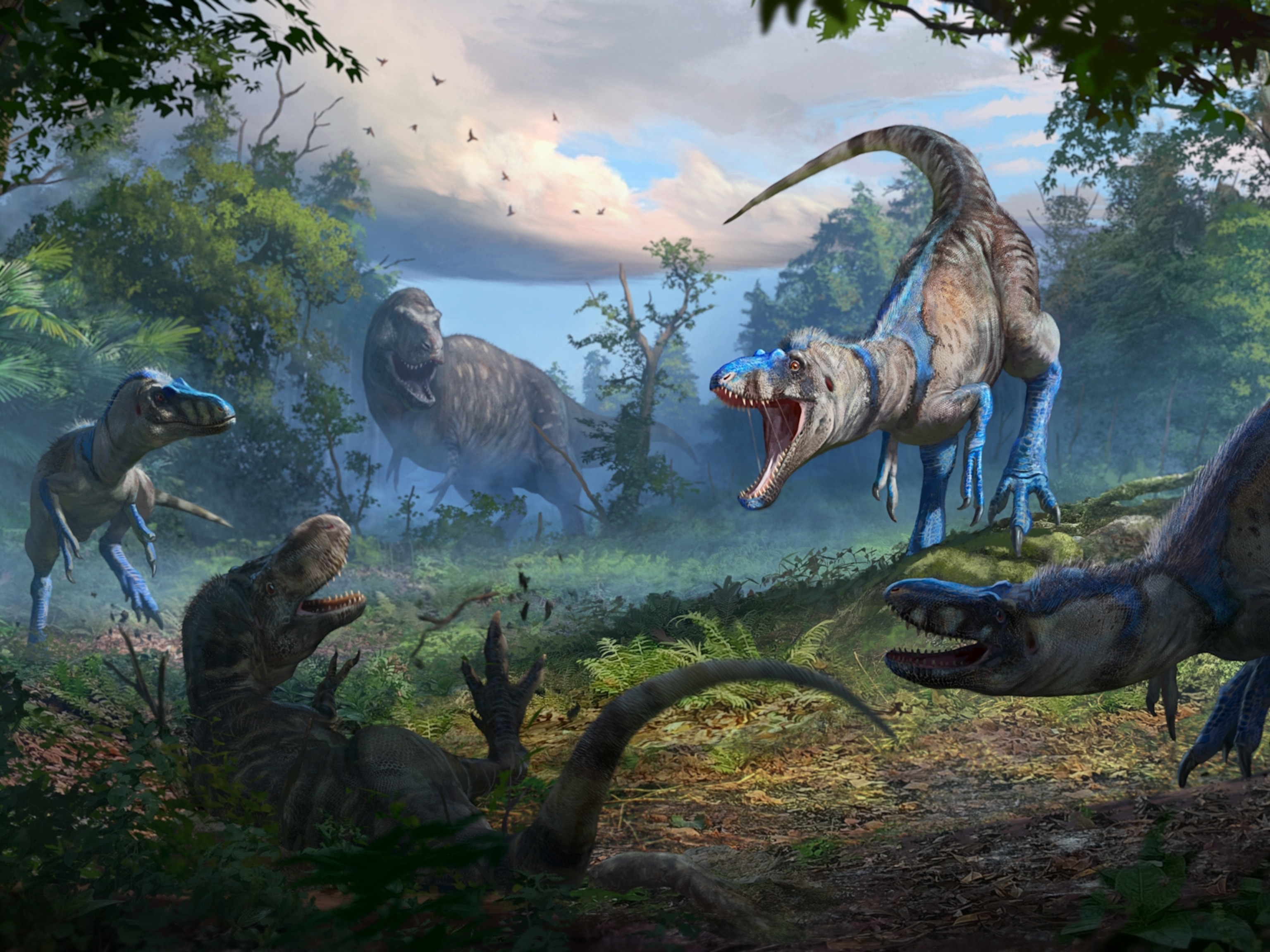
New Strong-Handed Dinosaur May Shatter Assumptions
Were gentle, plant-eating giants also scavengers and opportunists?
Fossils of an intriguing new species with a powerful hand may reveal an edgier side of some supposedly peaceful, plant-munching dinosaurs, a new study says.
The discovery of Sarahsaurus aurifontanalis, which roamed North America about 190 million years ago, also boosts the idea that at least some dinosaurs became masters of their domain less by dominance than by opportunistic behavior and a bit of good luck.
A remarkably complete Sarahsaurus skeleton, found in Arizona, shows that the early Jurassic herbivore was, at 14 feet (4.3 meters) long and 250 pounds (113 kilograms), smaller than its enormous sauropod cousins such as Apatosaurus, which arose later. (See a sauropod picture.)
Like the sauropods—the largest animals to walk Earth—Sarahsaurus featured a long neck and small head. But the newly identified creature also boasted strong teeth and an unusual clawed hand, that, while only human size, was clearly built for enormous power and leverage, according to paleontologists.
"The dogma is that these animals were herbivores, but these hands and massive claws reopen the door to what they might have been doing with them," said study leader Tim Rowe, a paleontologist at the University of Texas.
"Looking at the teeth, I think they could have eaten anything that they wanted, so they may have also been scavengers and not pure herbivores."
Mass Extinction Prompted Dinosaur Migration?
Beyond its bizarre appearance, the new species lends support to the relatively new view that dinosaurs came to dominate North America by being opportunistic, not necessarily by overpowering their competitors.
(See "Dinosaurs' Rise Due to 'Blind Luck,' Study Says.")
Dinosaurs, including Sarahsaurus, are generally believed to have originated in South America—then part of the ancient southern supercontinent Pangaea. But how and why they conquered the rest of the world is a matter of more debate.
By dating bones of Sarahsaurus and two other previously described species, scientists suggest that sauropod ancestors migrated to North America in several waves after the Triassic-Jurassic mass extinction killed off the dinosaurs' North American competition 200 million years ago.
"It's not as if they stormed the beaches," Rowe noted.
"They had to wait for this natural catastrophe to empty the neighborhood. So they were opportunists, not completely superior invaders. The poignant story to me is that of recovery after a great extinction."
The Sarahsaurus skeleton also spurred a reanalysis of existing fossil fragments in other species, Rowe said.
For instance, the team now asserts that sauropods were completely absent in North America prior to the Triassic-Jurassic extinction that wiped out more than half of the planet's species. (See a prehistoric time line.)
Sarahsaurus Fills "Black Hole"
Utah Museum of Natural History paleontologist Mark Loewen, who was not involved in the research, agrees that the study provides more evidence for a later sauropodomorph dispersal into North America.
(Also see "Tiniest Dinosaur in North America Found.")
Parts of the theory aren't entirely new, but the new evidence is consistent with what others have said, he added.
Loewen also said Sarahsaurus is a very important species, helping to fill out a family tree that has been quite bare in its particular time and place.
"We don't have any real well-known sauropodomorphs from that formation," he said.
"It's basically been a black hole of knowledge in the American West, a place where we know so much about dinosaurs.
"I think this will change how we look at the dispersal of [sauropod ancestors] and how they evolved over time."
Dinosaur Luck Ran Out?
Study co-author Hans-Dieter Sues said "it's just strange that we find lots of [sauropod ancestors earlier] in Europe, South Africa, South America, and even in Greenland, but in [North America's] Triassic, even with a fantastic fossil record, not a single bone or tooth has been found."
"There must have been something that excluded these guys," said Sues, a curator of vertebrate paleontology at the National Museum of Natural History in Washington, D.C.
"In the past, it's been argued that dinosaurs had superior adaptations to other reptiles, but it seems to be more a case of opportunism"—when competitive species were wiped out, he added.
If the Triassic-Jurassic extinction was beneficial to dinosaurs, the beasts got their own comeuppance 135 million years later.
"For reasons that we don't understand, dinosaurs survived that [Triassic-Jurassic] extinction event without any apparent casualties while a lot of other groups went extinct," said Sues, whose study appeared October 6 in the online edition of Proceedings of the Royal Society B.
"That's interesting, because 65 million years ago, it was the dinosaurs' turn to go extinct, and only one [dinosaur] group, the birds, survived."





